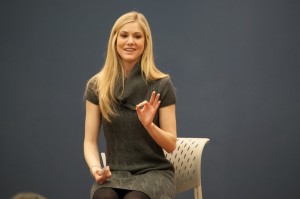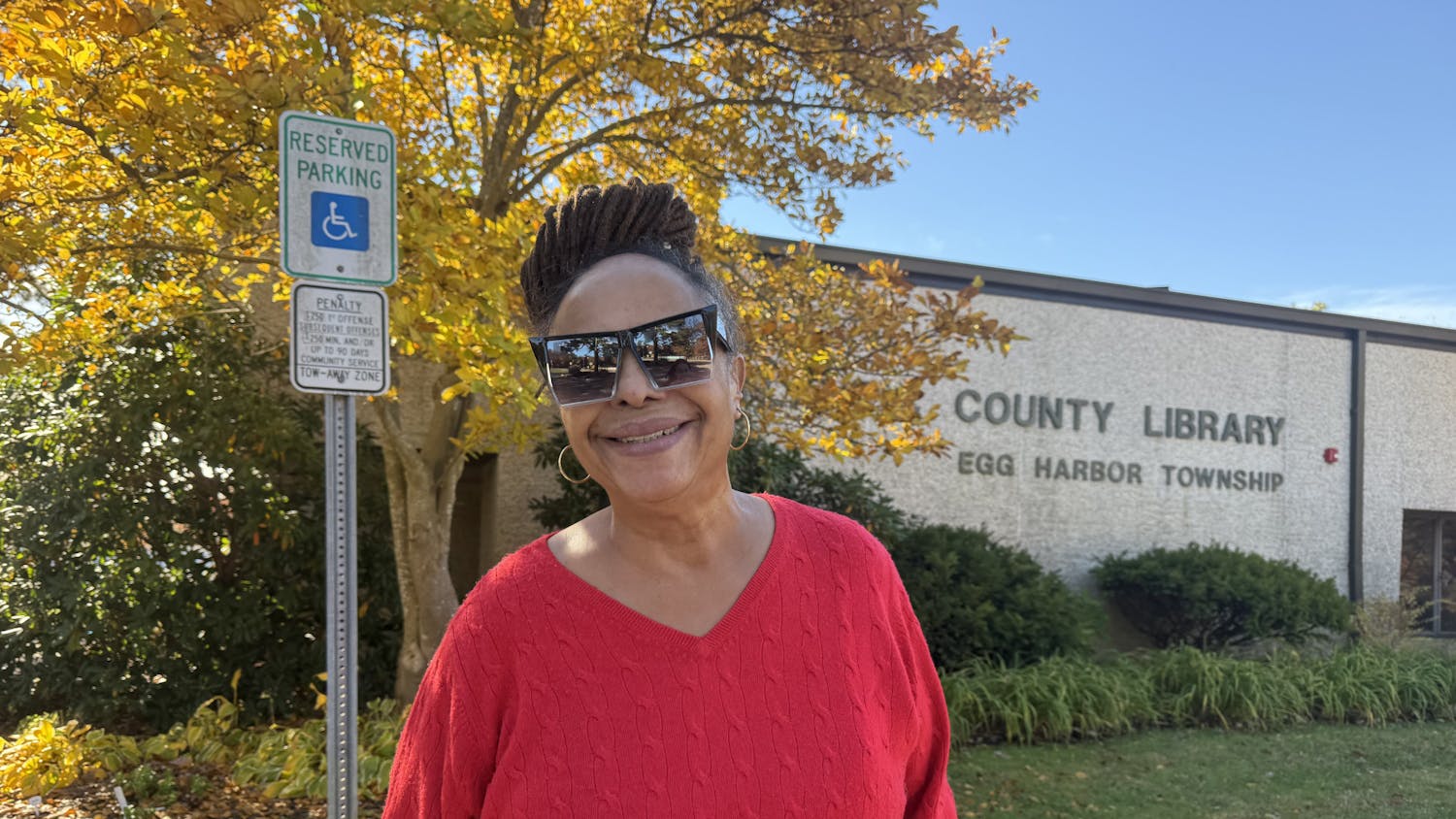It’s a conversation rarely had, as its struggles are often revealed only by a mirror’s reflection or a toilet seat containing the remnants of one’s shame. It’s talked about only in hushed tones or in an internal battle within one’s mind, yet typically over 90 percent of girls and 10 percent of boys on college campuses suffer from eating disorders in one way or another.

But on Tuesday, Feb. 18, it was discussed by students alongside Kirsten Haglund, Miss America 2008, in an intimate setting in the Cromwell Lounge, in an effort to bring the issue out in the open in honor of Eating Disorder Awareness Month at the College, sponsored by CAPS.
It’s often inferred that people fighting eating disorders acquired them from being in environments of high stress and participating in body image competitions such as pageants and modeling. Haglund actually used these opportunities to aid her in recovering from anorexia nervosa.
Haglund didn’t grow up dreaming to be a pageant queen and she wasn’t raised in a setting like the children in “Toddlers and Tiaras.” She grew up wanting nothing more than to be a ballerina.
“I was the good kid,” Haglund said. “I fell in love with ballet. This was my entire life, this was my identity.”
But as she begun to stake her life on being a ballet dancer, Haglund realized she might not be good enough or even thin enough to do the things other dancers were doing, and that’s when her self-esteem took a dangerous toll.
“To feel like you have no future because you’re not good enough and not thin enough — that is awful,” Haglund said.
And it was that feeling that led Haglund to begin her disease like so many others, with a small diet and a goal to lose just five pounds.
“You lose (weight) and you feel euphoric for a few days,” Haglund recalled. “But this voice comes back saying, ‘You could lose more.’”
Haglund continued on in a tearful yet elegant tone, explaining that she couldn’t understand why she still felt insignificant and worthless even though “she followed all of the rules” in an effort to obtain the perfect physique for a ballerina. She detailed not a childhood of playing with friends or gossiping over the latest drama, but one of sleepless nights, because the hunger was too painful and all she could do was cry on the bathroom floor and hide alone, drowning in her depression.
“It’s a deceptive disease,” Haglund said. “It’s hidden very easily.”
However, as her condition grew worse and became more apparent, Haglund’s mother dragged her to the doctor kicking and screaming, and that was when she was no longer able to hide her darkest internal struggle.
“I didn’t want to get better,” Haglund admitted, despite being forced to receive medical attention. “I thought all of the doctors were just trying to make me fat.”
It wasn’t until six months later at 16 years old that Haglund blacked out and fell off of a treadmill during a workout. It was at that moment she realized she could actually die.
“It actually kills you,” Haglund bluntly stated to the audience. “It sets you up for death. You will die if you keep up your eating disorder.”
But upon her realization that she was putting herself in severe danger, “a seed of hope was born inside” of her and she decided she “wanted to live.”
“(It was) a very small seed of hope, but that is all you need,” Haglund said.
She went on to detail that the recovery process was “hellish and long and really, really hard.” After two years of working, Haglund finally reached a healthy weight and was deemed to be “recovered.”
However, she felt her real stamp of recovery during her involvement in the Miss America pageant.
She detailed a funny anecdote about her finding herself in a situation where she had to wing a spontaneous speech in front of an audience during a 9/11 memorial.
“I had never spoken in front of an audience,” Haglund said. “The only thing I (could) do (was) speak from my experience.”
As she was approached afterward by people thanking her for what she said, she realized that, “I offered something unique and different just because of who I was.”
Feeling the impact made by her small speech, Haglund began to share her recovery story during pageants, which most people assume are filled with superficial women.
She explained that people didn’t care about perfection or a speech about world peace — it was her struggles that made her real in that world.
As Haglund’s story was clearly touching to the silent audience engrossed in her words, she lightened the mood during her story by passionately exclaiming, “You need carbs! If you leave with nothing else, you need carbs!”
She closed her story — one that began as a result of a need to be perfect — asking the students to replace perfectionism with gratitude because then life becomes simpler.
“This is a conversation that needs to be had,” Haglund said about the realities of eating disorders. “I just want us to leave here with a culture of openness … because we don’t talk about these issues as much as we should. We’re all in this together.”







